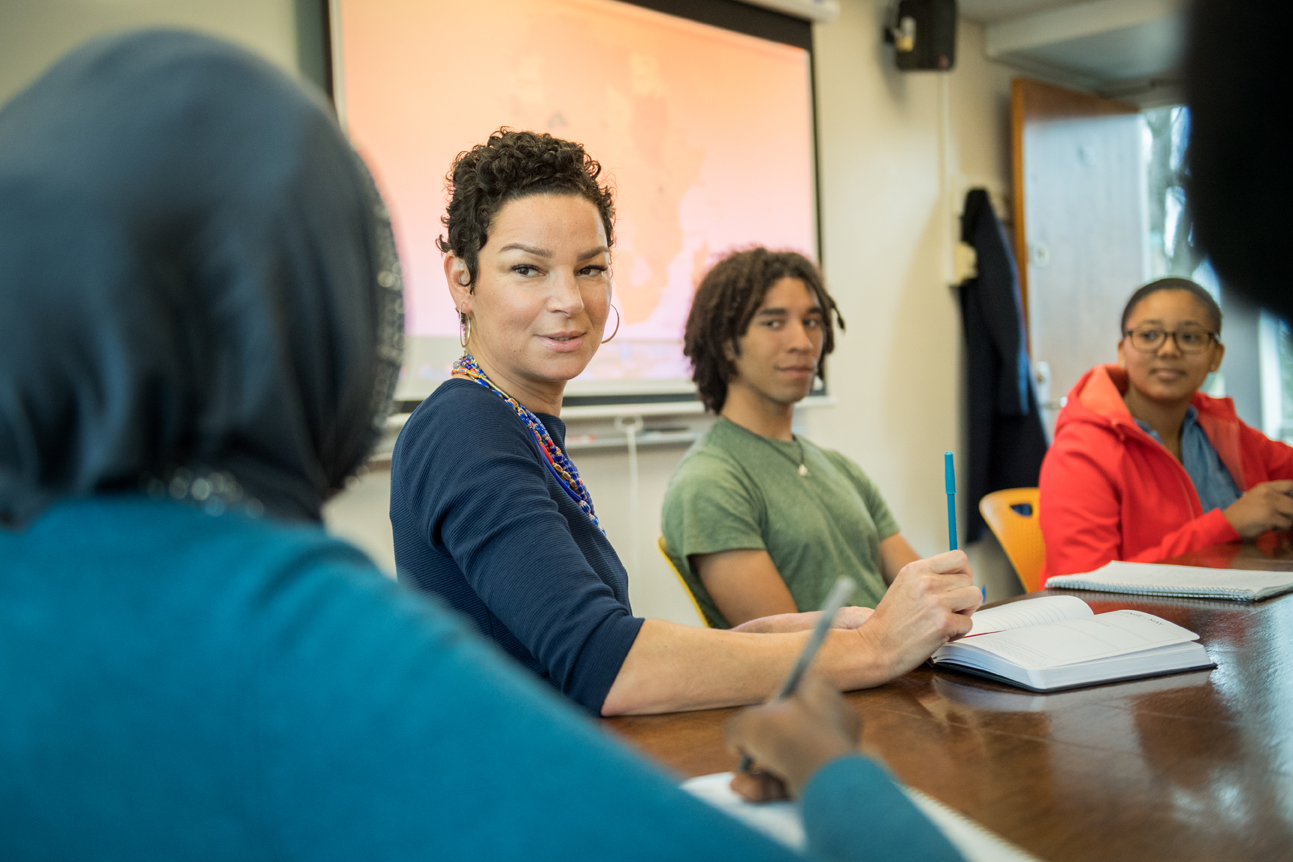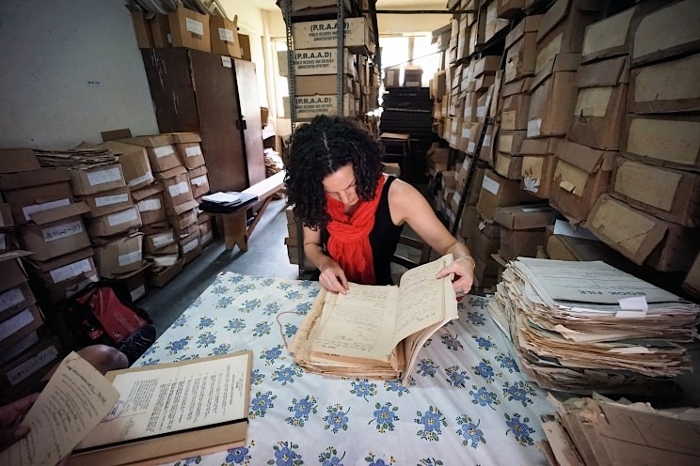Carina Ray fuses scholarship and teaching with personal experiencePosted in Africa, Articles, Biography, Campus Life, History, Media Archive, United States on 2018-06-14 18:17Z by Steven |
Carina Ray fuses scholarship and teaching with personal experience
Brandeis Now
Waltham, Massachusetts
2017-12-17
Jarret Bencks
Office of Communications

Carina Ray in the classroom
Almost 25 years ago, historian Carina Ray spent her junior year abroad as an undergraduate studying in Ghana. She planned to explore her Puerto Rican family’s African roots.
Most Ghanaians she met insisted she was white, despite her longwinded explanations about her multiracial background. Eventually, she realized it would be smarter to talk less and listen more.
“I was enthralled by what Ghanaians had to say about their own perceptions of blackness and how race works there,” says Ray, associate professor of African and Afro-American studies (AAAS). The seeds of Ray’s career were planted.
By the time she returned to the University of California, Santa Cruz, to finish her bachelor’s degree, Ray knew she wanted to study what it means to be black in West Africa — from an African perspective. The history of race in Africa was rarely written about from an African perspective, and it became the focus of her PhD in African history at Cornell University…
Read the entire article here.
